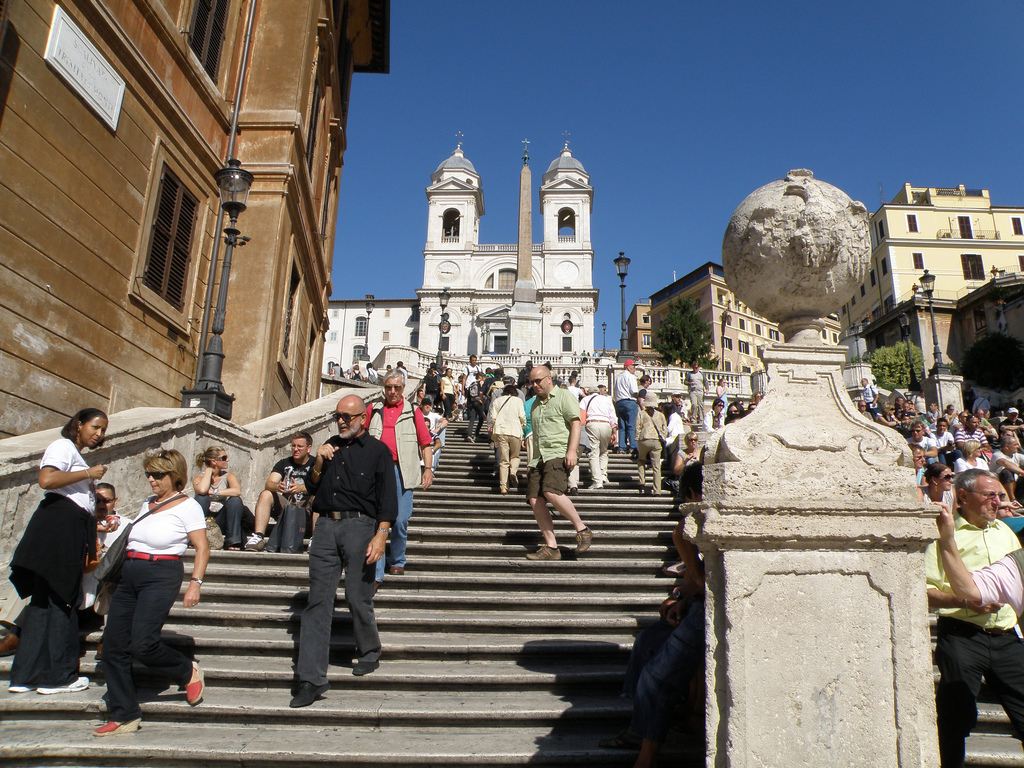Connecting two historic monuments in Rome, the Spanish Steps have become an important historic site in and of themselves. The urban intervention is Baroque in style while also employing the classical ideals of movement and ornamentation, attracting many tourists to the stairway daily. Its terraces and broad steps are always full of visitors and locals who use the Spanish Steps as a resting place and as an observation point to view the surrounding area from above. The popularity of the Spanish Steps is as much for thier historic significance and aesthetic beauty as it is for their utility as a convenient connection to the elevated topography of Piazza Trinita dei Monti.
The monumental Spanish Steps link two historic public piazzas in Rome: the Piazza Di Spagna at the bottom, and the Piazza Trinita dei Monti at the top. In 1717, a French financier hosted a competition to design a link between the Spanish Embassy (the primary site of Spain’s influence in Rome) and the Trinita dei Monti Church (under patronage of the King of France). Francesco de Sanctis had the winning design for the Spanish Steps, which was chosen for its Baroque style and innovative use of perspective to create a trompe l’oeil effect, which makes the change in elevation between the two sites appear less dramatic. Though the competition was meant to mitigate Spain’s rising power in Rome and to solidify France’s occupation of the area, the steps were named the “Spanish Steps” due to Piazza di Spagna’s odd shape, which strongly influenced the distinctive design of the stairway.
Image credits, from left: Abir Anwar via Flickr, Michelle Lee via Flickr, Dennis S Hurd via Flickr







